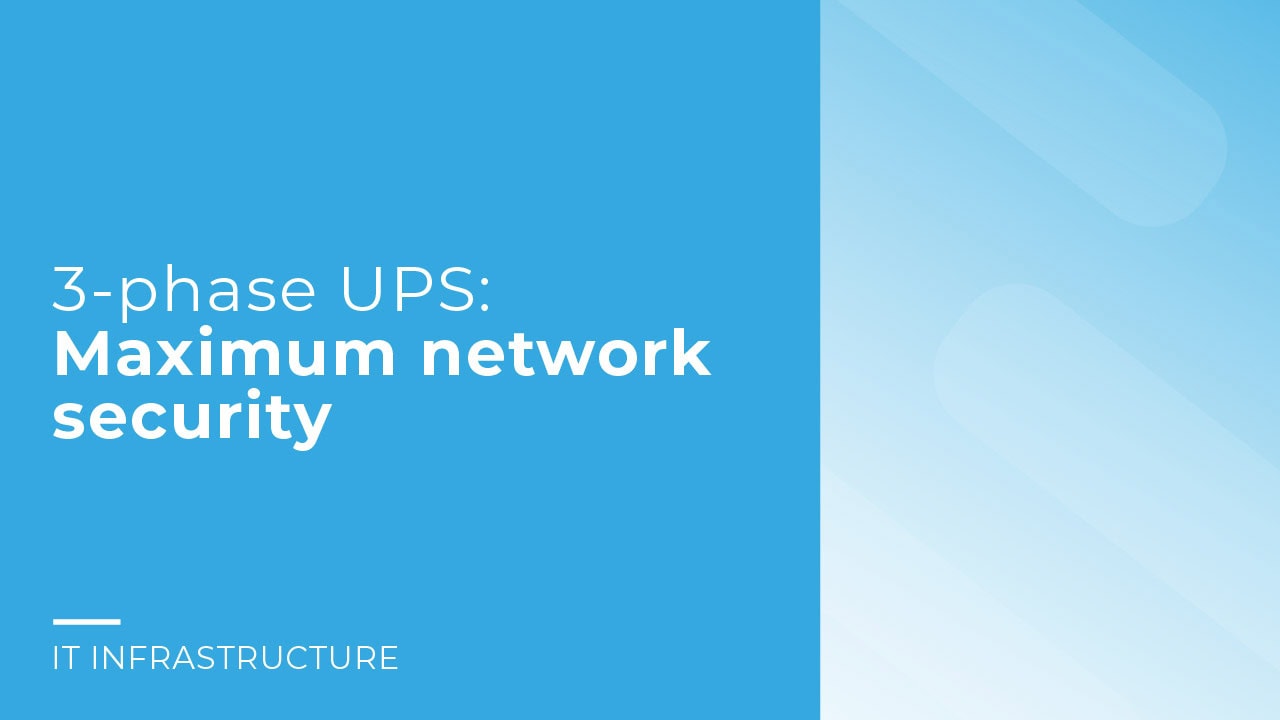
Power failures, network fluctuations, under- or overvoltage … these are all real dangers that every network is exposed to on a daily basis. The resulting problems in the home are annoying. In the corporate sector or even in critical infrastructures, they can even have catastrophic consequences. To prevent this, 3-phase UPS systems are used. These ensure a smooth supply in networks with heavy power loads.
The abbreviation UPS stands for uninterruptible power supply. UPS systems are therefore devices that guarantee a permanent and fail-safe power supply. They ensure an even power distribution and in the event of a failure, they bridge this with the help of an integrated battery. They therefore act like an emergency power system, but work with shorter switching times.
3-phase UPS are designed to split and evenly distribute the power from 3-phase power supply systems (also: three-phase current, 3-phase alternating current or heavy current). In the event of a supply problem, the power supply is still ensured by the integrated battery taking over.
The devices are also generally class 1 UPSs. These online UPSs (also known as continuous operation UPSs or continuous converters) act as power generators that constantly generate their own mains voltage - without any significant switchover time. Thanks to the so-called bypass circuit, it is possible to switch to an alternative supply branch without interruption in the event of problems. Because of these properties, 3-phase UPS are used in networks with very high requirements.
3-phase UPS are used wherever high power loads need to be transported. These include large data centers, industrial plants, widely branched networks and critical infrastructures.
Here, network failures are associated with huge consequential damage that must be urgently avoided.
Depending on the industry, these can be, for example:
It is important that you can classify your planned application accordingly. The (reasonably) high purchase costs are only economical if the 3-phase UPS is also necessary for the intended environment.
A spontaneous power supply failure can have far-reaching and serious consequences. With a 3-phase UPS, you can prevent these and stay one step ahead of various types of power failure.
Examples of these faults could be the following:
As a result, your IT infrastructure also protects your business from consequential damage such as interrupted processes, workflows or loss of data.
Instead, with this UPS, you generate an even load distribution and a permanently secure supply for your networks. Thanks to its compact design, such a device takes up little space, but is highly efficient, especially with high current loads.
If you are not yet using a UPS system, it is high time to change this. However, you should obtain sufficient information before integrating one. Because like every part of a functioning IT infrastructure, the use of such a device should also be planned.
You should therefore first determine the overall performance of the systems to be protected. This is important in order to weigh up whether the purchase of a 3-phase UPS is economical and, above all, necessary. You can find out more about this in our UPS guide "UPS guide: How to find the right UPS system for your requirements".
Also keep the possibility of subsequent scaling in mind. Modern 3-phase UPS systems usually have the corresponding properties.
You can also obtain 3-phase UPS from IT-Planet, especially from the manufacturers APC and Eaton. Take a look at our UPS systems category.
A 3-phase UPS (uninterruptible power supply) is an emergency power system that distributes power evenly across the three phases. This 3-phase alternating current is also known as three-phase current. In the event of a power failure, the bypass circuit switches to the integrated battery without interruption. 3-phase UPSs are used in large companies and industrial plants with very high requirements. The power supply of these systems consists of three sine waves phase-shifted by 120°.
3-phase UPSs are used in environments with high power supply requirements where high power loads must be transported reliably:
The electricity distributed by a 3-phase UPS in a system is called three-phase current. This supplies the connected devices with electricity and protects them from power disturbances. Three-phase current consists of three alternating voltages, each phase-shifted by 120 degrees, which is a form of alternating current. The phase shift ensures a uniform power output to the consumers.